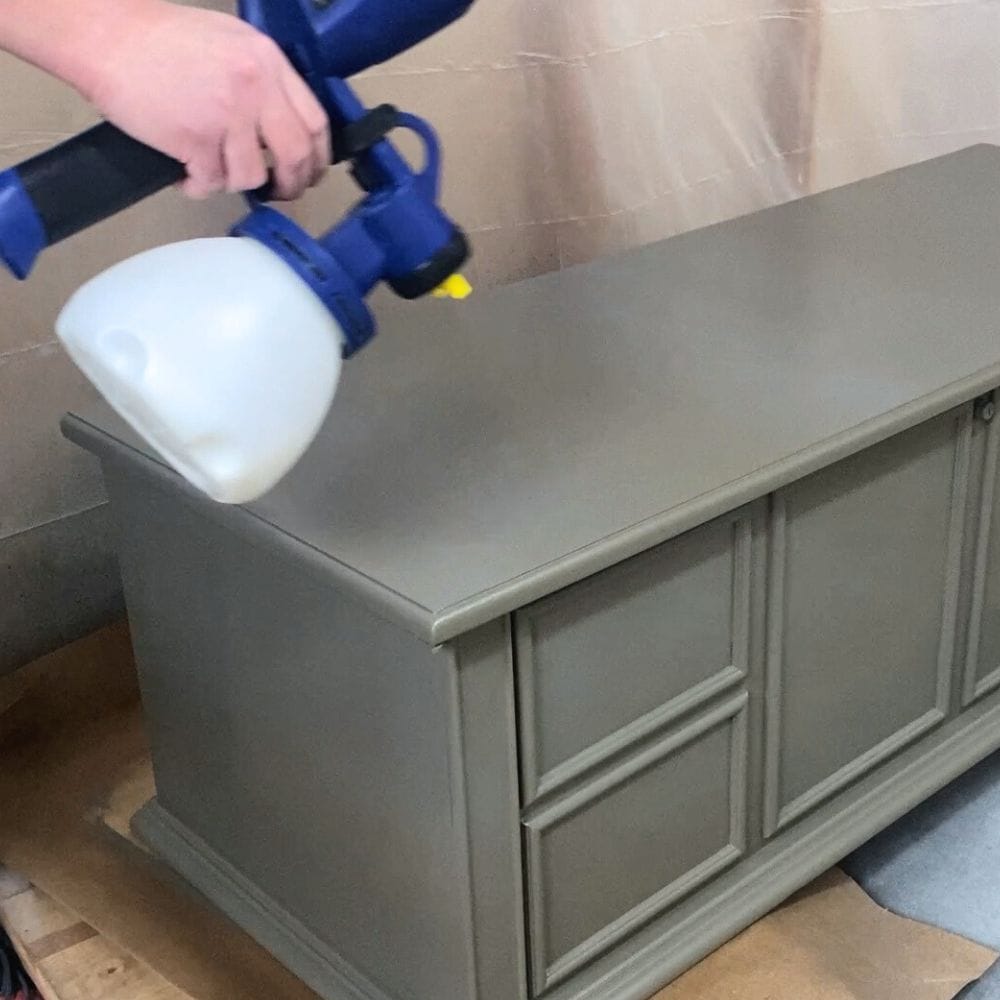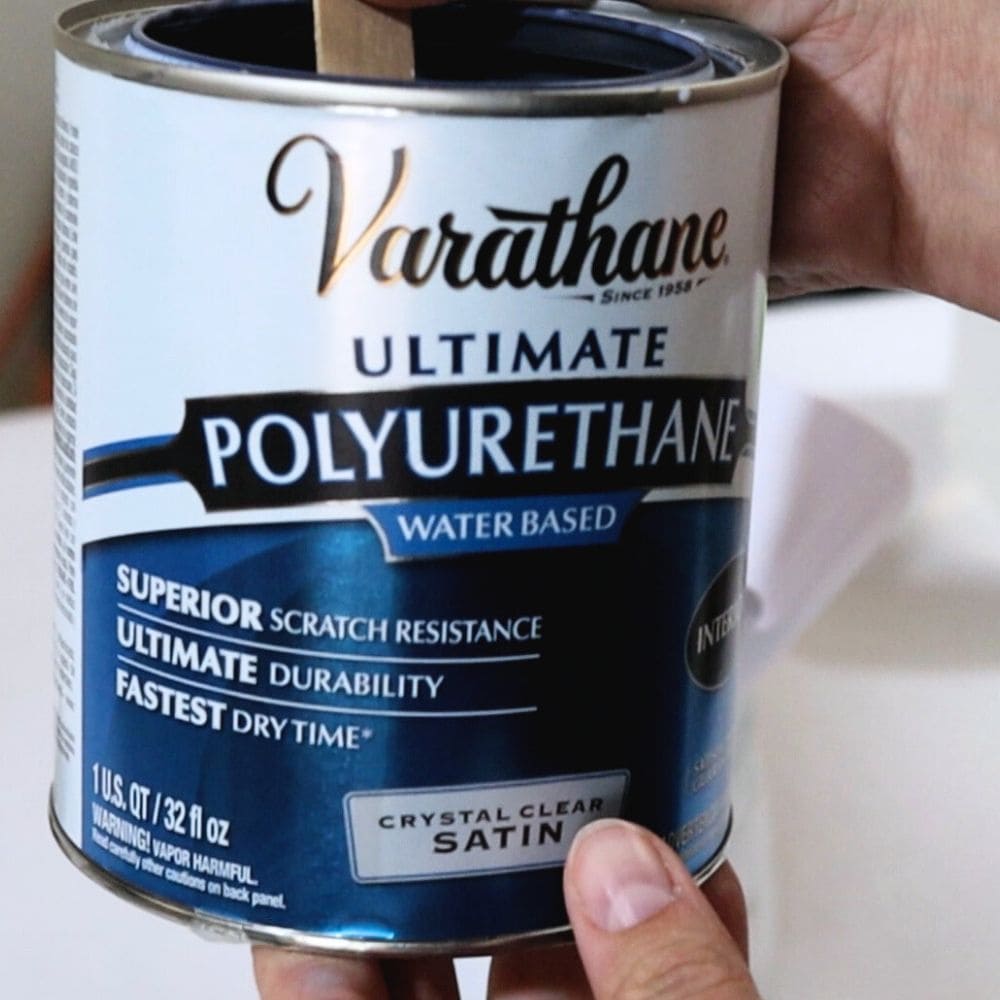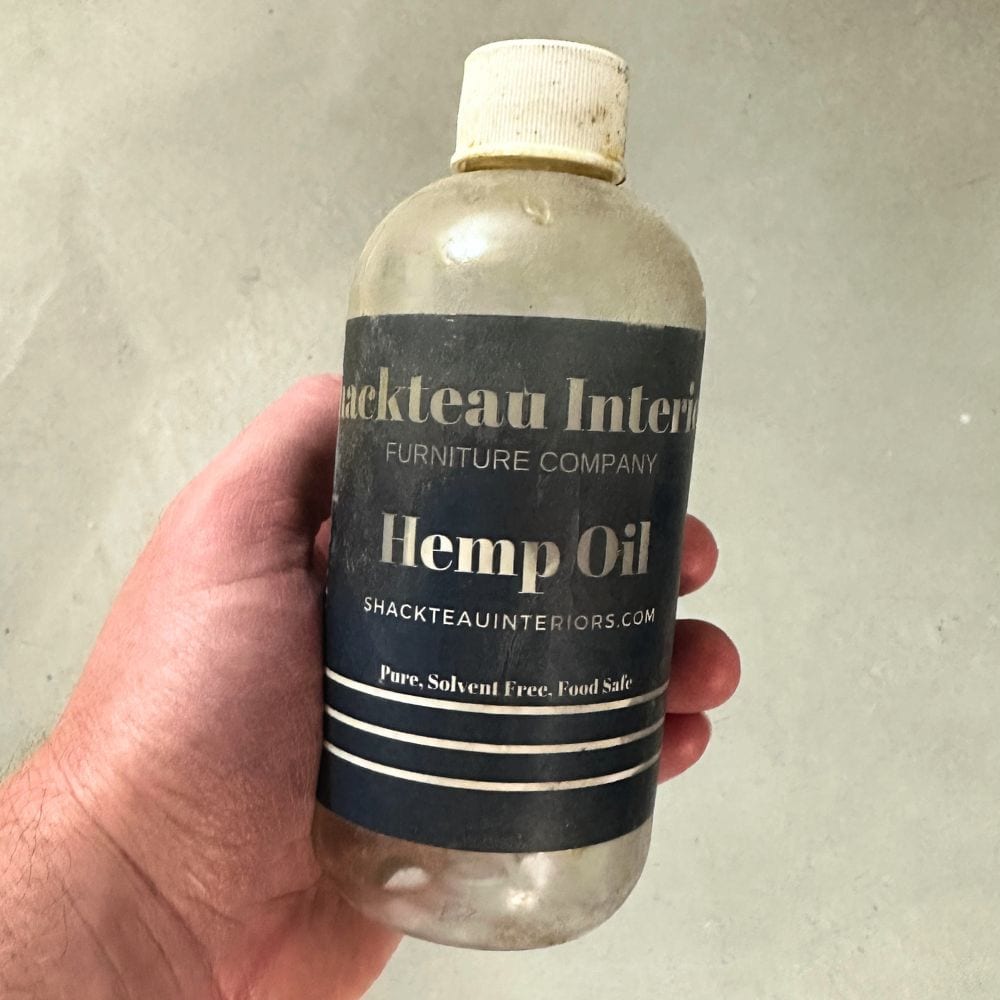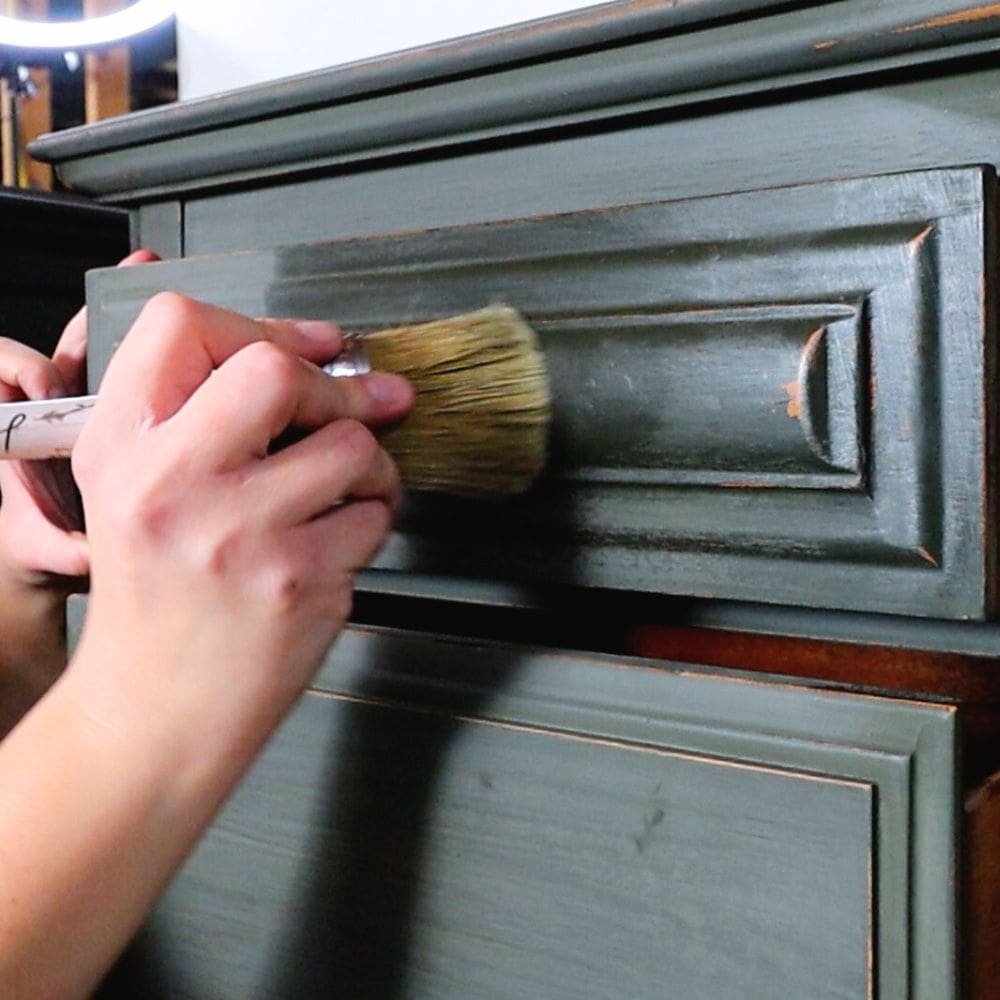Sealing Painted Furniture: And How to Choose the Right Sealant for Your Project
Painted furniture is a popular trend right now, and for good reason. Painting furniture is a great way to add some personality to your home without spending a lot of money. However, properly sealing painted furniture is important in order to protect it from scratches and stains.
So today I’m sharing different types of sealants that you can use and how to choose the right one for your project.

Painted furniture is beautiful, but it’s not invincible. In order to protect your furniture from scratches and stains, you need to seal it properly. The type of sealant that you use will depend on the type of paint that you used and how you plan to use the furniture.
Porous paints like chalk paint, mineral paint, milk paint, or acrylic paint can easily be scuffed up. And dust can more easily collect on the surface of these paints.
It is also more difficult to wipe anything off of the surface of things painted with these paints. Adding a sealant or sealer on top of the dry paint makes the paint more durable, but it also makes it possible to wipe things off of it.

Some paints, like waterborne (not to be confused by water-based) alkyd paints do not need a topcoat, and actually, most of the time they don’t react well to topcoats throughout their cure time.
Even though most latex paint (satin, semi-gloss or gloss sheens) is wipeable, it can still benefit from a topcoat to make it more durable.
Oil-based paint does not need a topcoat.
As an Amazon Associate, I earn from qualifying purchases. I also may earn from other qualifying purchases with other companies or get free product to review and use. All opinions are my own.
What are the Different Types of Sealants?
Polyurethane, furniture wax, and hemp oil are popular sealants for painted furniture. They each have their own benefits and drawbacks. I’ll share more about each one down below.
Ultimately, the best way to choose the right sealant for your project is to read the instructions carefully and decide what works best for you.
How do I choose the right sealant?
The type of sealant that you choose will depend on the type of paint that you used and how you plan to use the furniture.
Make sure to read the instructions carefully before using any type of sealant.
Water-based Polyurethane
Water-based polyurethane (also known as polycrylic) is a great sealant for painted furniture because it’s durable and protects against scratches and stains.
It also doesn’t have as many fumes as oil-based polyurethane, and it also doesn’t amber like oil-based polyurethane does. Check out our blog post about polycrylic vs polyurethane to learn more about their differences.
However, it can be a little bit tricky to get a streak-free application if you apply it by hand.
Water-based polyurethane works great over most water-based paints, like chalk paint, latex paint, acrylic paint, and milk paint.

It should not be used over waterborne alkyd-type paints. It dries quickly, usually within a few hours. And you can very gently use your furniture 24 hours after it has been top coated with water based polyurethane. It completely cures within a month. And it can last for years with proper care.
Furniture Wax
Furniture wax is a popular sealant for painted furniture because it gives a beautiful finish and it’s easy to apply. It can be applied by hand with a wax brush, and buffed by hand with a lint-free rag or with a buffing machine.
One downside of furniture wax is that it doesn’t offer as much protection against scratches and stains as other types of sealants.

It also takes longer to dry to the touch. And until it’s very dry, almost completely cured, you can see every fingerprint or smudge in it.
Furniture wax technically also needs to be reapplied every few months. It is best used over paint that is very porous like chalk paint, mineral paint, and powdered milk paint. You can also use it with acrylic paint.
Here’s our blog post about wax vs polyurethane to learn more about the advantages and disadvantages of both sealants.
Hemp Oil
Hemp Oil is a natural sealant that is non-toxic, environmentally friendly, and sustainable. You apply it, let it sit for a few hours, and then wipe the excess off. Hemp oil takes a while to dry – it can take several days for it to just dry to the touch.

But once it cures, it forms a durable, water-resistant finish. It’s also food safe once it cures. You don’t need to reapply hemp oil often – it can last for years with proper care.
It is best used over paint that is very porous, so it can soak into the paint. So chalk paint, mineral paint, and powdered milk paint are great candidates for hemp oil.
How to Seal Painted Furniture with Water-Based Polyurethane
Water-based polyurethane should not be used over wax or hemp oil. But you can put wax over water-based polyurethane after it has dried for 48 hours.
By Hand
1. Make sure the surface is clean and free of dust, dirt, or other debris. Wipe it down with a damp cloth if necessary. Tack cloths are amazing at picking up little specs of dust!
2. Apply a thin coat of polyurethane to the surface using a brush or sponge. (I prefer a sponge!) Be sure to apply it in even strokes, and avoid going over any areas where you already applied polyurethane. This can be tricky!
3. Let the polyurethane dry for at least 2 hours.
4. Repeat this process until you have applied 3 coats.
Here’s our blog post about how to apply polyacrylic by hand to learn more about all the steps of this technique.

With a Paint Sprayer
This is my favorite way to apply water-based polyurethane. (If you don’t have a sprayer, you can use Minwax Polycrylic in the spray can.)
- Make sure the surface is clean and free of dust, dirt, or other debris. Wipe it down with a damp cloth if necessary. Tack cloths are amazing at picking up little specs of dust!
- Add the polyurethane to your paint sprayer. Use a mesh filter to make sure there aren’t any chunks of dried polyurethane or anything foreign in it.
- Add a little bit of filtered water to it to thin out the polyurethane. The water helps it take longer to dry, so it will level out better and feel smoother.
- Spray onto your painted furniture just like you would spray paint with it. The settings might be slightly different.
- Let dry for 2 hours.
- Spray 2 more coats of polyurethane, letting it dry between coats.
Extra Tip: I like to lightly sand with 400 grit sandpaper between the 2nd and 3rd coats to make the finish feel smoother.
For more information and even more tips, visit our post on how to spray polyurethane.
We’ve also listed the best sprayers for polyurethane here.
I have found that I can lightly set things on top of the polyurethane after 24 hours. The keyword is lightly.
How to Seal Painted Furniture with Furniture Wax
There are a few different ways to seal painted furniture with wax. You can use either a brush or a cloth to apply the wax. I prefer to use a brush because it gives me more control, and I can get into more details.
- Make sure the surface is clean and free of dust, dirt, or other debris. Wipe it down with a damp cloth if necessary. Tack cloths are amazing at picking up little specs of dust!
- Apply a thin coat of wax to the surface with a brush or cloth. Be sure to apply it in even strokes, and avoid painting over any areas that you already applied wax to.
- With a lint-free rag, buff the excess wax back off. The more you buff it, the glossier it will get.
- Let the wax dry.

You can use either clear wax (this will give you a light protective finish) or dark wax (the dark wax will add depth and richness to the finish) or even a combination of the two. Actually, it’s recommended to use clear wax before dark wax if you want to use dark wax.
The clear wax creates a little barrier to make the dark wax less likely to soak into the porous paint, so it makes it easier to remove the dark wax if you’ve put too much on.
Dry time with wax is longer than with polyurethane. I let it dry for a couple of days before setting anything on it.
How to Seal Painted Furniture with Hemp Oil
There are a few different ways to seal painted furniture with hemp oil. You can use either a brush or a cloth to apply the hemp oil. I prefer to use a brush because it gives me more control, and I can get into more details.
- Make sure the surface is clean and free of dust, dirt, or other debris. Wipe it down with a damp cloth if necessary. Tack cloths are amazing at picking up little specs of dust!
- Apply a thin coat of hemp oil to the surface with a brush or cloth.
- Let it soak into the paint for a couple of hours.
- Then remove the excess oil with a lint-free rag.
- Let the oil dry for 24 hours.
- Repeat this process until you have applied at least two coats of hemp oil.
Hemp oil takes a while to dry, so I like to wait a few days before setting anything on it.

The right sealant can be the difference between a beautiful, durable finish and one that collects dust and scratches easily.
Now that you know how to seal painted furniture, you can finish up your project!
More Sealing Furniture Tips:
- 3 Ways To Seal Milk Paint
- Spray Polyurethane VS Brush On Polyurethane
- Wax For Chalk Paint: Is It The Right Choice For Your Furniture?
Follow us on YouTube to get more tips for painting furniture.
Or share your project with us on our Facebook Group and be part of our community. See you there!
